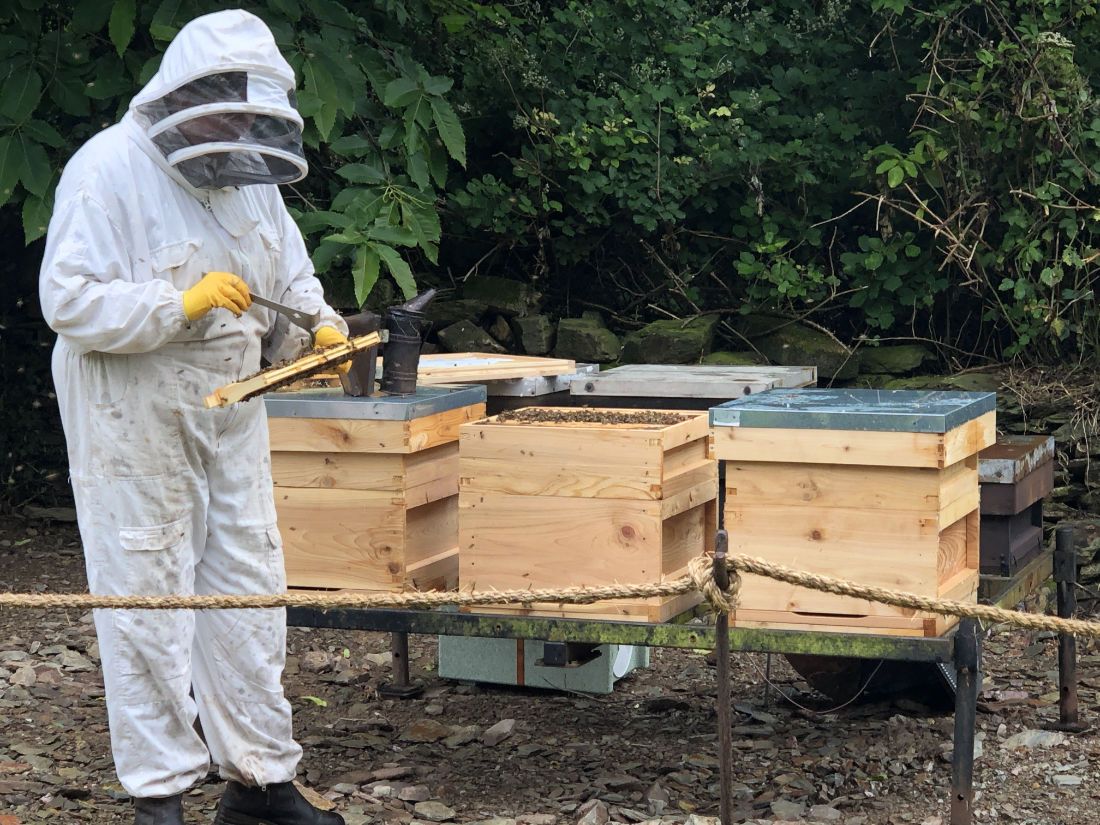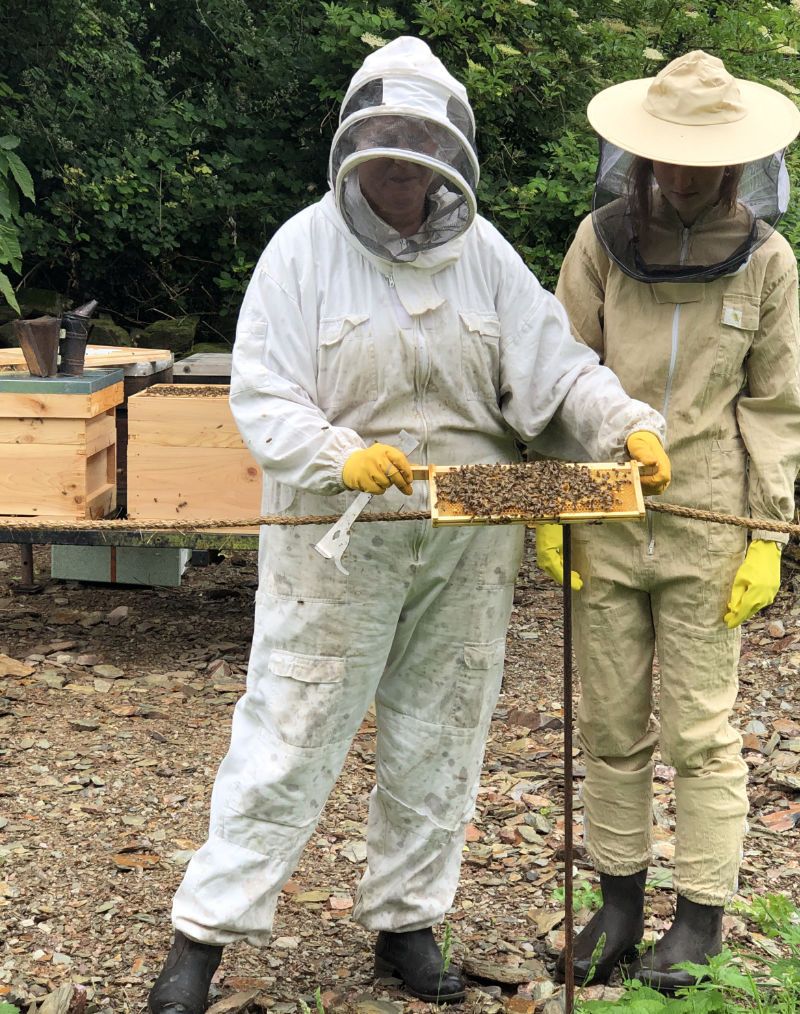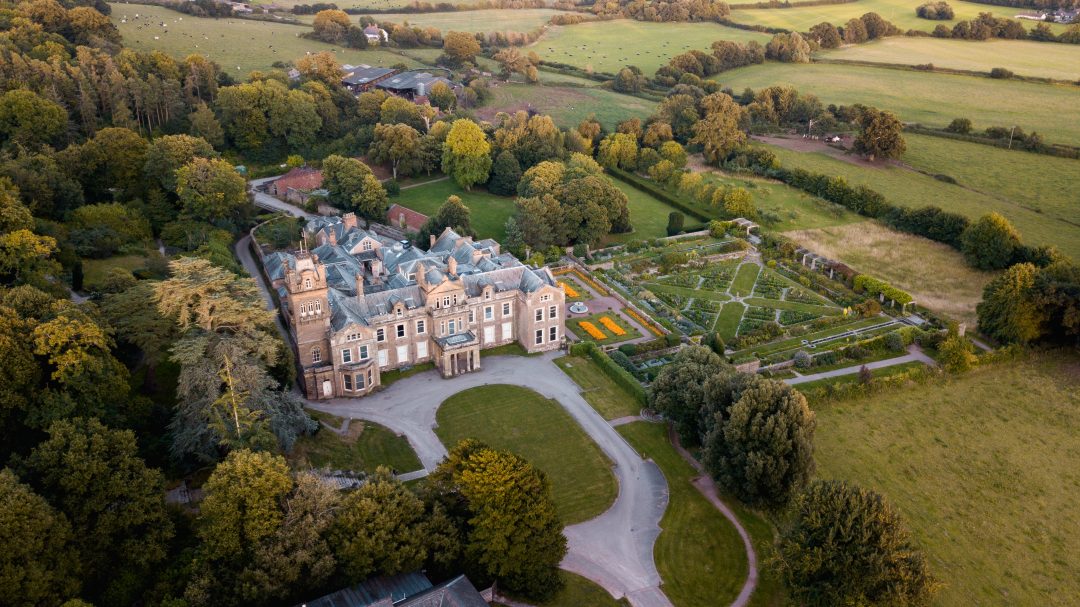
Looking after the new hives at Hestercombe
We’re welcoming bees into a new home at Hestercombe, with the delivery of six hives for these humble honey makers.
Ian Stiby and Rosie Ellis, who are beekeeping partners at Three Bridges Apriary, have brought the new colony to the orchards of Hestercombe so we can produce our own special Hestercombe Honey.
Each hive can contain anything from 10,000 bees, and with bees under threat from pesticides, badgers, and even wasps, we’re keen to keep the population thriving.
Dependent on the crops and flora that nearby to the hives, the honey will have a very specific flavour to the season – just like a fine wine.
While the worker bees are busy pollinating and making honey to feed the queen – the queen can’t get to the honey to lay her eggs in, but she can leave the hive from a gap in the bottom.
Ian says: “You’ve got the brood chamber at the bottom of the hive, and that’s where the queen does her laying. Then you’ve got the honey “supers” on top, which aren’t as deep as the brood chamber – that’s where the honey happens. Anything above these two levels, the queen can’t get to as there is just a very small slot which the worker bees can get through, but not her.”

Beekeepers Rosie and Devin show off the new hives at Hestercombe
How to look after bees in your garden
The hives at Hestercombe are fixed to a frame to keep out hungry badgers, and keep the bees safe, but there are things you can do at home to look after our vital pollinators. Ian suggests a few easy things you can do to attract and protect bees to your garden:
- Plant bee-friendly flowers. There are plenty of meadow-mix seed packets that are bee friendly. Wildflowers, and a diverse mix of flora is a great way at attracting bees.
- Cover a tray with stones in with water. This means the bees can alight on the top of the stones and have a drink. Bees need water too!
- Keep the wasps away. Bees are a tasty meal to wasps, who will hunt them out. Hornets are also a threat. Ian’s advice is if you see an Asian Hornet, to report it to Defra, who will track it to its nest and destroy the nest.
- Avoid pesticides. It’s widely reported that pesticides are killing our bee population. There’s little you can do currently about what farmers use on their crops, as it’s dictated by Government, but in your own gardens try and garden without too many sprays.
- Look after nature. By being more aware of your surroundings, you’ll help wildlife overall. Don’t pick wildflowers – keep areas of wilderness in your garden if you have space, and build bug hotels and small places for bees and other insects to find safety in.
Find out more about bees
Read this advice from the RHS on how to encourage bees into your garden; and join our gardener Tom for his Wildflower Walks in June and July to find out more about the habitats at Hestercombe.
